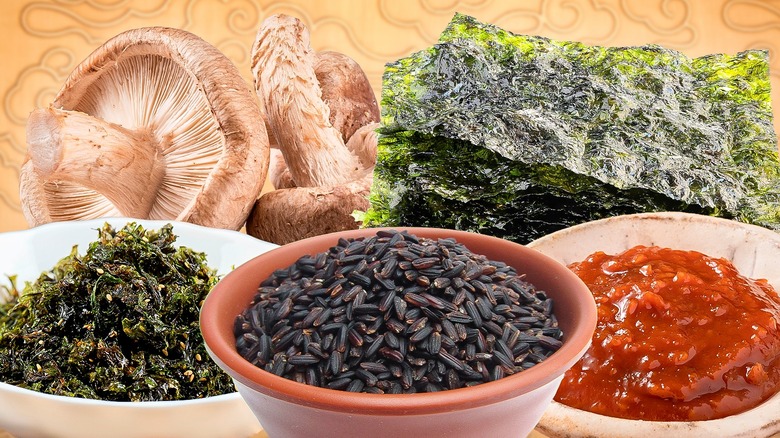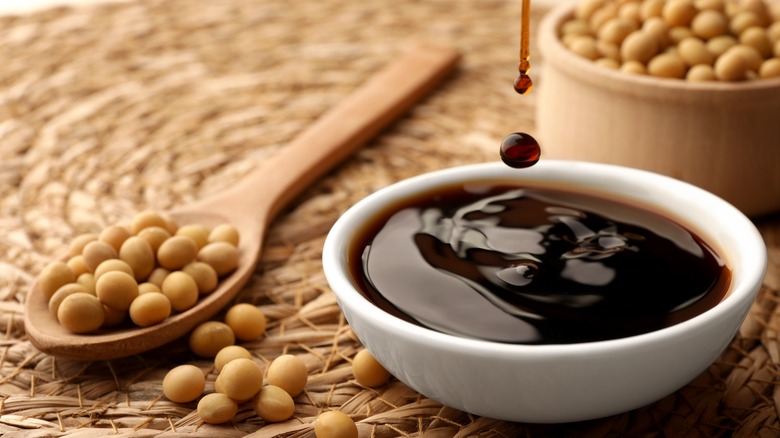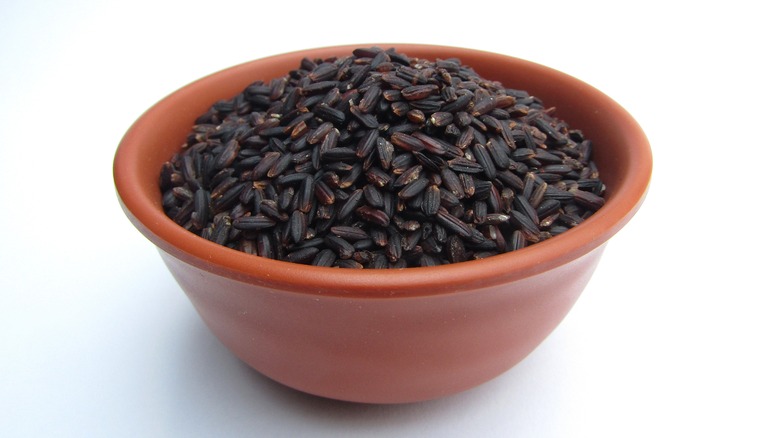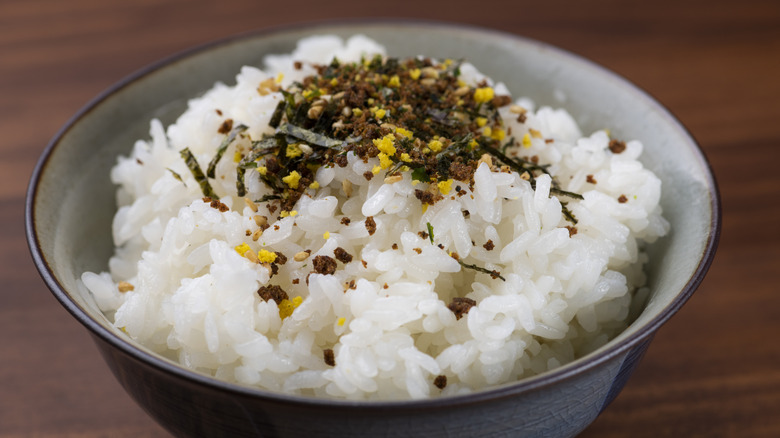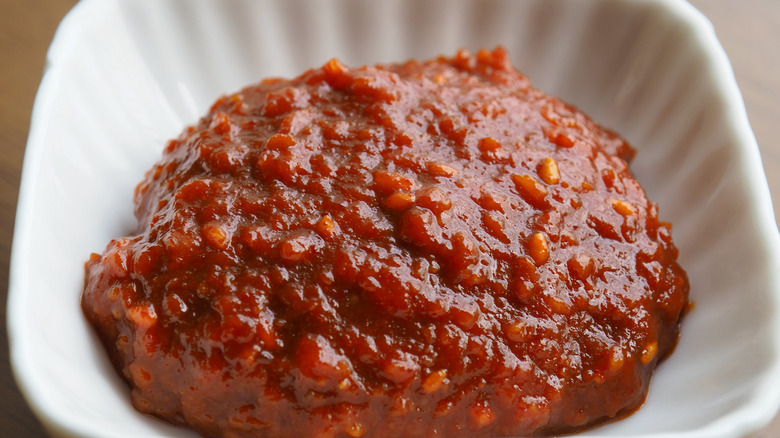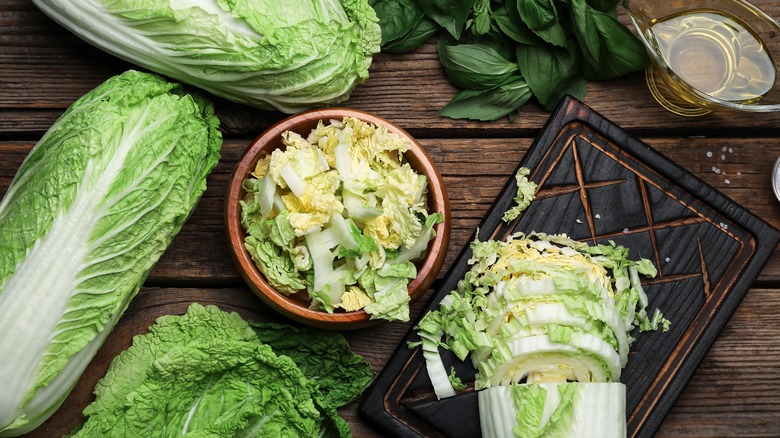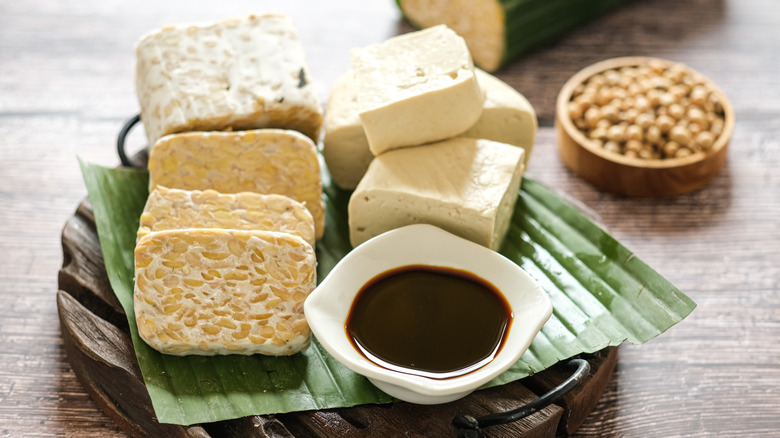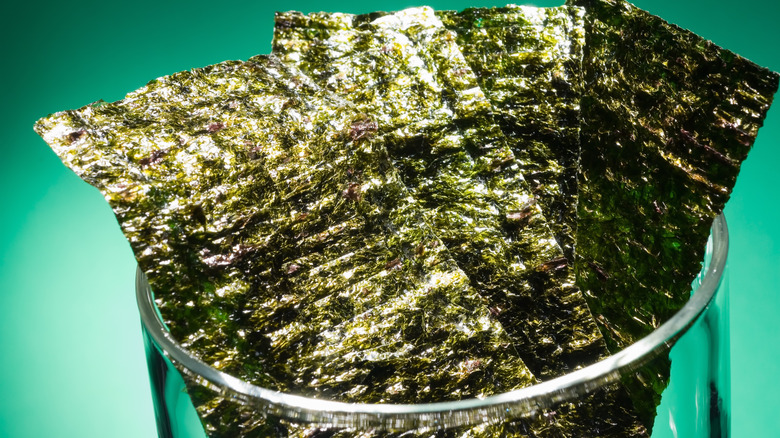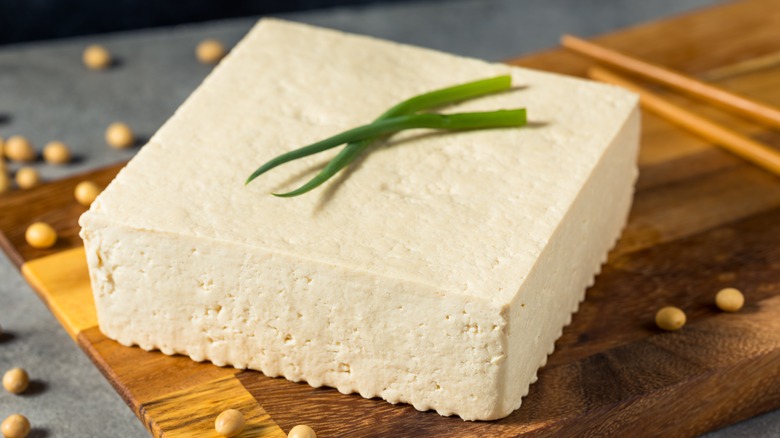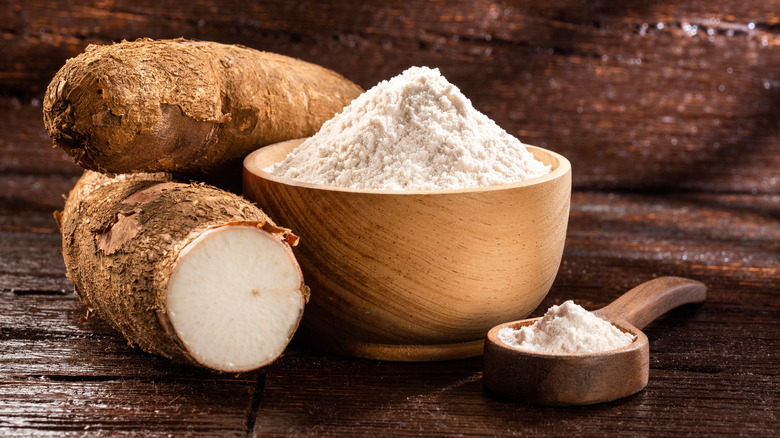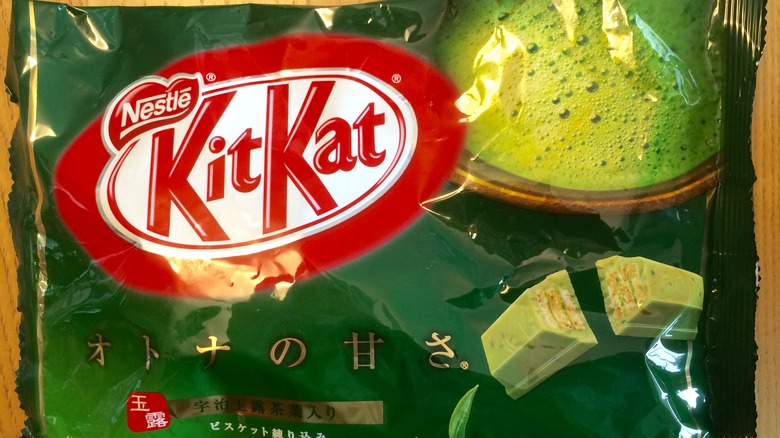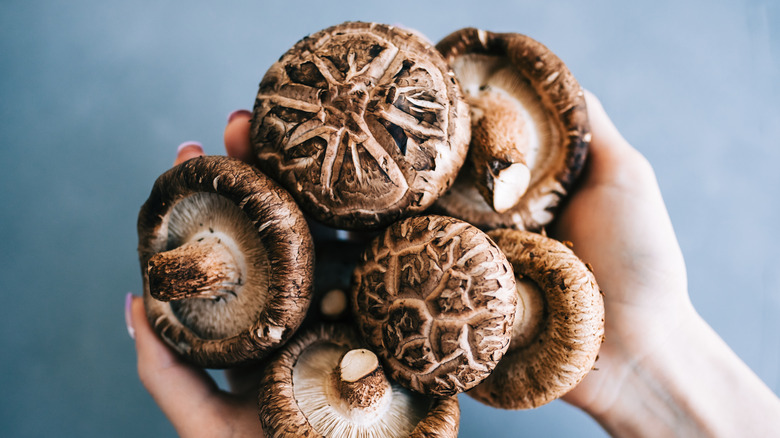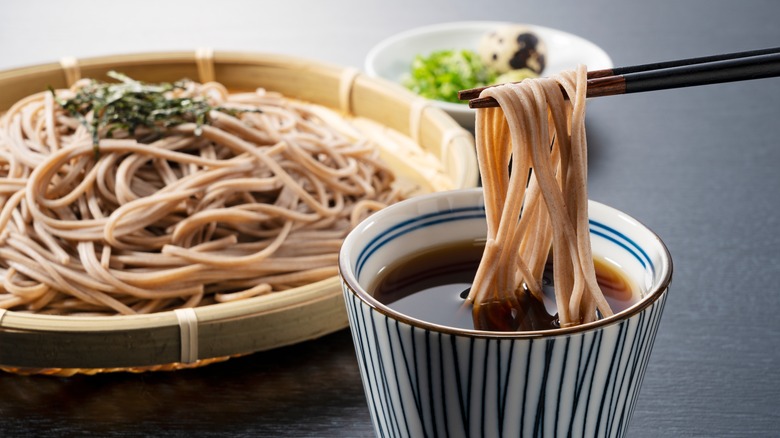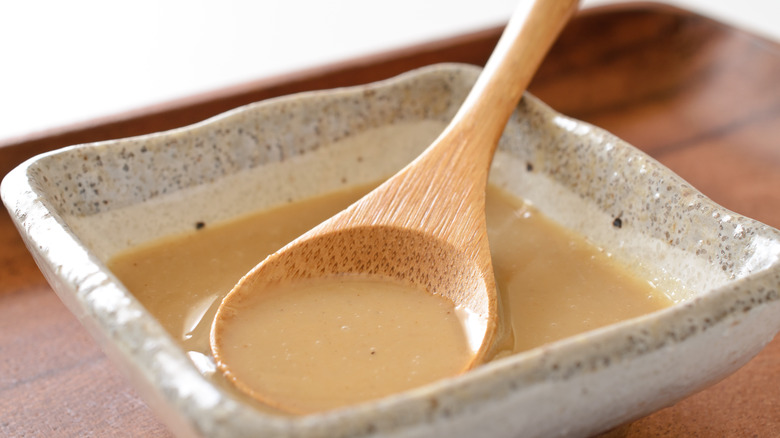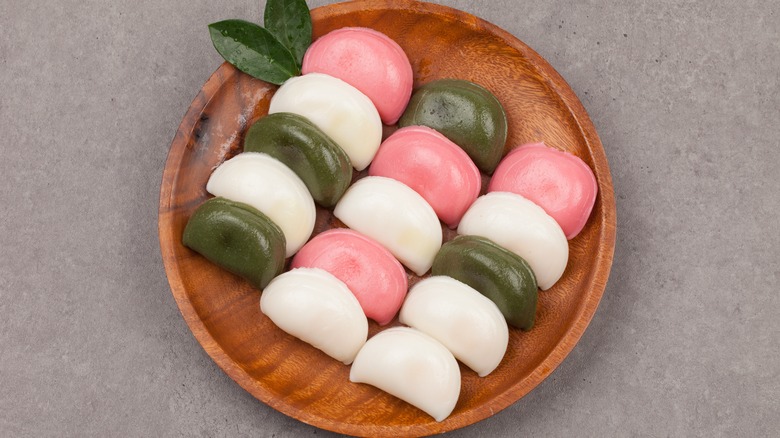The 15 Best Value Items (And A Few Specialty) To Buy At An Asian Grocery Store, According To A Cook
Shopping at an Asian grocery store will allow you to find all kinds of products you wouldn't usually find in your mainstream grocery chain, or at least at a more affordable price. Many of these will make your home cooking better, easier, or more varied. Asian grocery stores are a haven for the diverse Asian diaspora communities across the world outside of Asia. In the U.S., stores like H-Mart have become more widespread and accessible in different parts of the country. Plus, Asian grocery stores often have ingredients from other parts of the world, too, like from the Caribbean, different parts of Africa, and even Middle Eastern products. I often find foods from my cultural heritage there when I can't find them anywhere else.
These stores also often have more variety of alternative ingredients for cooking plant-based, dairy-free, gluten-free, or nut-free foods. I'm a working cook, recipe developer, and food writer, and I rely on Asian grocery stores to find specific ingredients for my weekly cooking and consumption.
Many of the ingredients you'll find are useful across numerous cuisines. Foods are often grouped according to type rather than country. There are so many great products to choose from, but here are some of the best items to buy at an Asian grocery store.
Artisanal soy sauce
Soy sauce is a really popular kitchen staple and won't be new to most people. It should be in any home cook's pantry as the possibilities for using it are endless. It's easy to find it at most grocery stores, however, you're likely to find only big-brand soy sauces, like Kikkoman or Yamasa. There's nothing wrong with using those, but there are artisanal soy sauces that have a much superior flavor and aren't full of added ingredients like preservatives, sugar, or flavorings. Luckily, many Asian grocery stores have a selection of smaller brand artisanal or handcrafted soy sauce that you can't find elsewhere.
You'll taste the difference immediately, and many of these smaller brands are family-run brewers that take time and pride in perfecting the fermentation process. For artisanal soy sauces, the fermentation process is slower (sometimes up to a year compared to, say, Kikkoman's 6-month brewing process), allowing the flavor of the soy sauce to deepen and develop over time. This produces a soy sauce with a complex taste and more powerful umami, compared to the sharp hit of one-note saltiness of the more commercial brands. They may be slightly higher priced, but they'll be worth every penny. If you don't know where to start, try Kishibori Shoyu artisan soy sauce or the Haku Smoked Shoyu.
Black rice
There are several rice varieties in the world, but the most well-known of them are white rice and brown rice. Brown rice is often hailed as a more nutritious rice. However, there's another type of rice that's even more nutrient-dense: Black rice is a strikingly colored grain that's packed with health benefits, and it's a great value item for purchase at Asian grocery markets. According to Healthline, it's the rice with the highest level of antioxidants, and it's got more protein than brown rice. It's also a good source of iron and has powerful anti-inflammatory properties. This rice has been known for its health properties and has royal origins as a forbidden rice during ancient times in China, where it was reserved for emperors and forbidden for the rest of the population.
Beyond what it offers in terms of nutrition, it's also surprisingly delicious. It's pleasingly chewy and has an earthier, nuttier flavor than other rice varieties. While quite expensive compared to other types of rice, you can usually find a variety of black rice in Asian grocery stores, with varying prices that aren't so high. It's an exciting food to add to your cooking repertoire and impress guests with its bold appearance and ancient lore.
Furikake
One thing to love about Asian grocery stores is how many seasoning and spice options are available. You can fill your basket with all kinds of spice mixes, salts, flavor enhancers, and umami-packed sauces that can season your rice, meat, and vegetables and even make delicious dipping sauces and dressings. One useful option is furikake. This Japanese seasoning will elevate your roasted vegetables, among many other things. The essential ingredients in furikake are dried fish flakes, sesame seeds, and dried seaweed, and some blends include other additions too. It's a kind of sprinkle that can instantly make anything tastier and is often added to cooked rice or fish.
If you've never had it and the thought of adding dried fish to your food is foreign to you, you'll be surprised just how delicious it can be. You'll usually have a few options to choose from, so you can start with a basic furikake or choose some of the spicier blends. Either way, it's a sprinkle that you'll love playing around with.
Ssamjang
Alongside the beloved gochujang, there's another tasty Korean condiment you should know about. For any home cook who loves umami and flavor, the secret weapon is ssamjang sauce. This ready-to-eat paste is made of fermented soybeans, red chile paste, garlic, and sugar, among other things. It doesn't need to be cooked (although you can cook with it), making it the easiest thing you can add to grilled meats, stews, or simply as a dip for fresh vegetables.
In Korean cuisine, ssamjang is often eaten around the barbecue or as a dipping sauce for lettuce cups. It's a flavor bomb and incredibly delicious, adding complexity to simple foods. It's a wonder how it's not on every shelf or every restaurant menu around the world. The good news is you can find it in most Asian grocery stores. It will likely be next to the gochujang in a similar packaging. Gochujang comes in a red box; ssamjang is the green one.
Chinese cabbage
Many Asian grocery stores have a fresh produce section, even if it's on the smaller side. One ingredient you're likely to always find is Chinese cabbage. This type of cabbage is usually available year-round in these stores and at a low price for such a versatile and delicious vegetable. In China, Korea, and other Asian countries, cabbage is key to many recipes and dishes, compared to the U.S., where it seems to have less appeal. The traits of Chinese cabbage, compared to green or purple cabbage, is that it's more tender and has a slightly sweeter taste.
Chinese cabbage is also different in that it's more of a long spherical shape, with leaves that are easier to pull open without tearing. Its shape and tenderness not only make it easier to prepare, but it also cooks faster. It's great for chopping up into a brothy soup or sauteed in a stir fry, cooking until tender with a bit of crispness. Another thing about its shape is that it lends to being stuffed and rolled up, so making stuffed cabbage rolls is easier when you use Chinese cabbage. It's also great for making kimchi for folks who love to make their own.
Tempeh
For tofu lovers who haven't heard, there's another fermented soybean ingredient that's a staple in Indonesian cuisine. Tempeh is an incredible plant-based food that can be pan-fried, grilled, mashed up, or steamed. It's not by any means a newcomer since it's been eaten in Indonesia for hundreds of years, but compared with its cousin tofu, it's not as widespread as it should be globally. It's gained popularity among the vegan and plant-based community because it's a great protein source and can be prepared in dishes instead of meat, eaten as a snack, and even has a place in dessert.
It has a slightly nutty, umami flavor that's reminiscent of mushrooms, and it's excellent at absorbing flavors. It can carry a marinade well. You can also find other types of tempeh that aren't made from soybean, and that use grains, seeds, beans, or nuts instead. These varieties include mung bean, broad bean, chickpea, lima bean, or even hazelnut tempeh. You'll find tempeh in the frozen section of the grocery store. Since it can spoil quickly, you'll rarely find it fresh. If you're a beginner, there are helpful guides for buying tempeh.
Nori sheets
Nori are the dried seaweed sheets that you find in sushi rolls and kimbap. They are delicate and paper-thin with a mild umami flavor. You can wrap up your favorite fillings in a nori sheet for a delicious lunch or snack, and it can even be added to broths to bolster the flavor of soup. Or you can use it to make onigiri for a lunch on the go that keeps well and is easy to eat. Nori can even be toasted to create a crunchier sheet with an enhanced flavor. You can find nori in large chain supermarkets, but going to an Asian grocery store offers you variety, and most likely a better price.
Asian grocery stores tend to have different brands of nori, and types of seasoned nori, which is another level of deliciousness. They'll also have different nori snacks that are so well-spiced and crispy that even people who think they dislike nori can be converted.
Super firm tofu
Tofu has become relatively ubiquitous, and thankfully so. It's a powerhouse ingredient that can be cooked in so many ways. This soy milk curd can often be found in varying levels of firmness and softness. You may have different needs for different textures, depending on the dish that it's being cooked in and whether that plate is savory or sweet. Since different types of tofu may result in different textures, it's great to have a variety of types to choose from. This is another reason to visit an Asian grocery store; you'll find a wider variety of tofu than mainstream supermarkets.
If you're looking for a user-friendly tofu to use in your everyday cooking, you want to choose one that you don't have to do a lot of prep with, such as pressing out water or freezing it to get the right texture. Using super-firm tofu saves you time and effort because it has that desirable chewy consistency that you want. Plus, it can crisp up with ease when pan-fried. Its sturdiness means it won't break easily, making it easier to braise or stir-fry it without worrying that it will disintegrate.
Tapioca starch
Tapioca starch (sometimes referred to as tapioca flour) is a non-wheat flour made from dried cassava (also known as yucca or manioc). This tuber is grown and eaten extensively in South America and Africa. You may have heard of tapioca pudding or know about the tapioca pearls in your favorite bubble tea. In truth, tapioca starch offers so many more uses. It's a popular choice for gluten-free baking due to the airy texture it creates that mimics gluten. It's also an effective thickener and can thicken sauces, soups, or custards. You can even use it to lightly coat something you want to crisp up while frying.
Keep in mind that tapioca starch is different from cassava flour, which you're less likely to find in an Asian grocery store. Tapioca flour is made from the entire cassava root (that's been dried and ground), and tapioca starch/flour is the dehydrated starch that's leached from the water of wet cassava pulp. In Brazil, where cassava is a common ingredient, cassava flour is known as farinha de mandioca and tapioca starch is polvilho doce. Then there's polvilho azedo which is tapioca starch that's been fermented before drying, making it a "sour" starch. You also won't find polvilho azedo at an Asian grocery store, as they'll likely only stock polvilho doce (tapioca starch).
Japanese Kit Kat
One of the best things about going to an Asian grocery store is the snacks and candy aisles. If you're familiar with them, they can invoke a lot of childhood nostalgia, and if you're not, it opens up a whole world of snacks you get to try. You already know Kit Kat as a popular chocolate wafer bar. Japan takes Kit Kat to another level with an array of flavors that don't exist elsewhere. There's a range of classic flavors and some seasonal ones that are rarer. Often, Asian grocery stores have a couple of classics and seasonal ones on offer.
Some of these exciting flavors include matcha, strawberry, yuzu, and caramel. And some of the lesser-known flavors include whole wheat, milk tea, melon, strawberry milk, salted lychee, chestnut, peach, and sakura sake. The flavors are intriguing, and, as a specialty product, they'll likely taste and feel better than American Kit Kat. Japanese Kit Kat is known for not being as sweet as American ones, with greater attention to the actual flavor, which is often infused with the real ingredient. It's a perfect choice for treating yourself to something sweet or gifting a friend.
Shiitake mushrooms
Depending on your cultural background or expertise in the kitchen, you could find shiitake mushrooms to be an incredibly normal ingredient or an exciting yet intimidating one. They are very common in plenty of Japanese and Chinese dishes, and their meaty texture and flavor make them really popular across the world. They are also incredibly good for you. According to Healthline, they may support your immune system and heart health while being high in minerals like manganese, selenium, iron, and vitamin B.
You may find that some Asian grocery stores will have fresh shiitake mushrooms in the produce aisle, but if not, you'll always find dry ones as a special product. Dry shiitake mushrooms are just as useful as fresh ones; they just need to be rehydrated first. You can also do this by adding them into your broth while it's cooking, which will soften them up. After that, they'll impart their deep, earthy, smoky flavor into your broth with ease.
Soba noodles
Noodles come in many forms, and it's normal to find wheat, egg, and rice noodles all over the U.S. There's an underrated noodle that deserves just as much spotlight and shelf space. Soba noodles are Japanese buckwheat noodles that are often eaten cold. They're very popular in Japan and you can find many restaurants that specialize in them, making them by hand on-site. There's even a tradition of eating them at midnight on New Year's Eve.
Their chewy texture and earthy, nutty taste make them especially moreish to eat. Plus, soba noodles aren't expensive and can be a great value product to find in Asian markets. Usually, if they're not mixed with other flours (check on the packet), they are naturally gluten-free, making them a good choice for people who have gluten allergies but want to eat noodles. To cook them, just boil them in water for the prescribed time on the package until soft (not al dente). To prevent them from sticking together, you have to wash them thoroughly in cold water after cooking to get rid of all the starch. Then add them to your stir fry or soup, or serve them cold in a noodle salad or simply with a vinegary dressing.
Sesame paste
Sesame paste is a magic ingredient. It can create instant creaminess and is completely dairy-free. Even more, it has a nutty flavor while being completely nut-free, making it a great choice for people with nut allergies. Made from ground sesame seeds, sesame pastes are usually diluted with water and seasoned in various ways. There are two major types of sesame paste, namely tahini used in Middle Eastern and North African cooking, and the Chinese version called zhi ma jiang. The main difference between sesame paste and tahini is that the Chinese version is made from toasted sesame seeds, so it's darker in color and has a deeper flavor (and you can also sometimes find black sesame paste). Tahini is made from raw sesame seeds and is more of a beige color.
These two types of sesame paste differ quite significantly in taste. Tahini can be found in many conventional Western grocery stores, but finding Chinese sesame paste can be more challenging. Asian grocery stores not only stock it but usually have different kinds, along with featuring tahini on the shelves as well. Get both types to try and experiment with. You'll quickly be able to see which you prefer and how differently they can be used.
MSG
It's been years since the world reckoned with its racist demonization of the food additive MSG. Nowadays, we know better and that it's not the bad-for-you additive that people claimed it was. Made from sodium and glutamic acid, MSG is an incredibly useful ingredient for adding more flavor and umami to all kinds of dishes. Still, it's still not easily accessible in grocery stores, even after losing its bad reputation.
Not to worry — it's a specialty item you can easily find in all Asian grocery stores. MSG adds instant depth to dishes and can greatly improve your cooking, enhancing umami flavors like meatiness or cheese. MSG is even useful in unexpected ways, like adding an umami depth to desserts. Just like adding salt to caramel can bring out its flavor, MSG adds complexity to sweet treats, too. However you plan to use it, it's a magnificent resource to work with.
Mochi
Mochi probably needs no introduction, but for the newbies, it's a popular Japanese confectionary made from glutinous rice flour. The beauty is in its texture, which is incredibly chewy, gummy, stretchy, and fun to eat. Glutinous rice flour is flavorless, so mochis can be flavored or sweetened in all sorts of ways, making for exciting fillings, coatings, or flavor options.
You're most commonly going to find it in the form of little domes filled with classic sweet pastes like red bean, match, or black sesame (as well as lots of fruity flavors). You can also find the plain kind that you have to cover with a sweet sprinkle. Nowadays, there's even mochi filled with ice cream or fresh cream and fruit. The options for mochi types are endless and one of the highlights of visiting an Asian grocery store is to see (and sample) all the different kinds. They aren't too sweet, so don't miss out on them, even if you don't normally go for desserts.
Methodology
As a culinary-trained professional, I have lots of experience using different ingredients and cooking different cuisines. I've also been lucky to work with and know many professional cooks who have introduced me to these foods. As I'm North African and do not come from an Asian background, I rely on years of learning from mentors and coworkers who have educated me on different Asian food cultures. The items selected for this list are based on personal preference, recommendations from friends, and the versatility of the ingredients for cooking across cuisines.
Another factor is availability. Many of these items are not easily found in other stores, especially specialty ones, like the artisanal soy sauce. The foods selected in this list can all be found at most Asian grocery stores, so you won't have any trouble sourcing them. Another factor is value and affordability. Most of the foods included will be more affordable when you buy them at an Asian grocery store. If they are stocked in mainstream stores, they'll likely have an inflated price tag due to them being considered a "specialty" food there versus being considered a common item. There are also some general ingredients that will be slightly cheaper in Asian grocery stores, like frozen berries or canned fruits. In truth, there are plenty of other great foods that weren't featured here due to limited space. Spend time in the sauce, rice, and noodle aisles and explore all the wonderful options.
